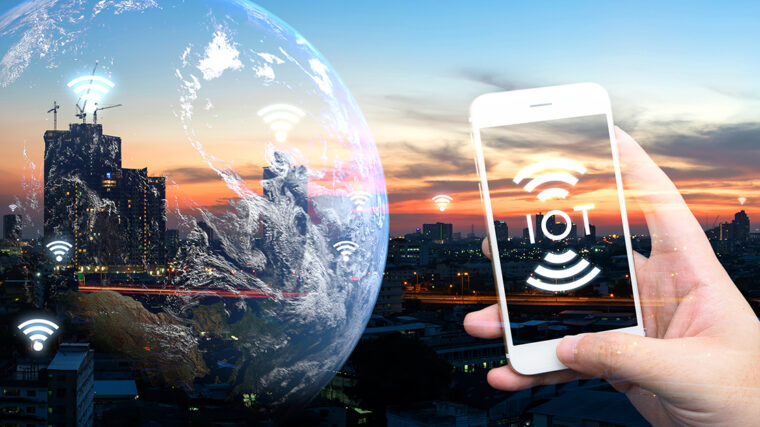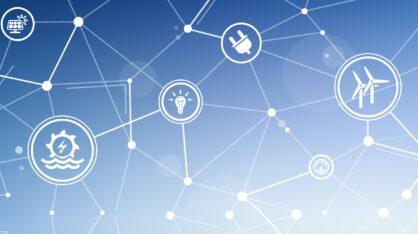Introduction
In the dawn of the 21st century, the world has come to recognize the profound and far-reaching consequences of human activities on the global environment (Saleha et al., 2023). The burgeoning industrial growth, consumption patterns, and exploitation of natural resources have left an undeniable imprint on our planet, heralding a critical need to reassess and reform our traditional models of business and production (Yin et al., 2019). At the intersection of this environmental concern and organizational performance lies the concept of sustainable supply chain management (SSCM) (Stroumpoulis & Kopanaki, 2022). SSCM is not merely a buzzword or a transient trend in the world of business. It is, rather, a comprehensive approach that aims to integrate environmental considerations into the very fabric of traditional supply chain management (Nozari & Ghahremani nahr, 2022). Unlike conventional methods that may prioritize cost-efficiency and speed, SSCM balances economic goals with an acute awareness of the ecological footprint, focusing on minimizing the negative impacts on the environment. The goal is to balance the requirements of the present and future generations without sacrificing the ability of the latter to do so. (Ramzan et al., 2022).
The rise of the Internet of Things (IoT) has been a pivotal force in this transformative journey towards sustainability in supply chains (Ahmed et al., 2021). As the complexity and globalization of supply chains have surged, so has the need to innovate and adapt. Modern supply chains are a web of interconnected entities, made even more dynamic and intricate through IoT technologies, spanning continents, bridging cultures, and melding diverse regulatory landscapes (Hermawan et al., 2022). This convergence of physical and digital domains allows for enhanced traceability, transparency, and efficiency, reshaping the boundaries of what is possible in the pursuit of sustainability. Organizations are actively seeking these innovative ways to implement SSCM strategies, using IoT to enable real-time monitoring and intelligent decision-making. From sensors that provide insights into resource consumption to interconnected systems that reduce waste, the integration of IoT in SSCM is opening new frontiers in environmental stewardship, aligning operational efficiency with the broader societal goal of sustainability (Yerpude et al., 2022).
Internet of Things (IoT)
The Internet of Things (IoT) stands out as a monumental advancement in the technological arsenal aiding SSCM, linking the tangible and digital realms in unprecedented ways (Saleha et al., 2023). It’s not just about sensors and data; it’s about creating an intelligent ecosystem where every component of the supply chain communicates and learns from one another (Yin et al., 2019). The real-time insights provided by IoT transcend the mere monitoring of processes; they enable proactive management and predictive modeling, allowing organizations to foresee challenges and respond to them before they become problems (Stroumpoulis & Kopanaki, 2022). From manufacturing plants where machinery can self-report wear and tear to logistics networks that dynamically reroute to minimize carbon emissions, the IoT offers unparalleled opportunities for holistic, environmentally sensitive control (Nozari & Ghahremani nahr, 2022). The ability to understand, measure, and manage every aspect of the supply chain in real-time represents not only a technological triumph but a social and environmental commitment. The incorporation of IoT into SSCM heralds a future where technology is not just a tool but a partner in the ethical stewardship of our planet. This seamless fusion of innovation and responsibility accentuates the role of IoT as not merely a functional enhancement to the supply chain but a transformative force that redefines the paradigms of sustainability and ushers in a new era of conscientious global commerce.
The advent of Internet of Things (IoT) technologies has marked a revolutionary shift in how the world interacts with and understands physical objects (Ramzan et al., 2022). IoT, by its very essence, is a convergence of the physical and digital domains, allowing objects to be sensed, connected, and communicated in an intelligent manner (Ahmed et al., 2021). In the context of Sustainable Supply Chain Management (SSCM), this interconnectivity has profound implications, opening new vistas for enhancing traceability, transparency, and efficiency (Hermawan et al., 2022). IoT technologies allow for the seamless integration and communication of physical objects within the supply chain. By embedding sensors, microcontrollers, and other smart devices, information can be gathered and transmitted in real time (Yerpude et al., 2022). This continuous data collection facilitates robust monitoring and analysis, transforming raw data into actionable insights.
The very nature of sustainability demands a transparent and accountable system where the environmental impact of products is meticulously recorded throughout their life cycle. IoT plays an instrumental role in achieving this by providing precise, real-time data on everything from raw material sourcing to final product disposal (Saleha et al., 2023). This granular level of detail enhances traceability, allowing stakeholders to see exactly where, when, and how environmental impacts are occurring (Yin et al., 2019). IoT sensors have become a pivotal tool in the monitoring of critical environmental factors such as energy consumption, waste generation, and emissions (Stroumpoulis & Kopanaki, 2022). These sensors can be strategically deployed across various stages of the supply chain, from manufacturing to transportation, to obtain a comprehensive picture of environmental performance (Nozari & Ghahremani nahr, 2022). The information collected becomes an asset for organizations, enabling them to identify areas for improvement, set benchmarks, and optimize processes (Ramzan et al., 2022).
The ability to provide real-time information about product movements, inventory levels, and demand patterns has empowered organizations to make smarter, data-driven decisions (Ahmed et al., 2021). The heightened visibility offered by IoT technologies ensures that decisions are informed by accurate and timely information, contributing to the reduction of waste, improvement in forecasting, and enhancement of overall supply chain efficiency (Hermawan et al., 2022). While the adoption of IoT technologies is already contributing significantly to the reduction of the environmental impact of supply chains, the journey is far from over (Yerpude et al., 2022). The future holds immense potential for further innovation, integration, and refinement of IoT applications within SSCM. At the same time, challenges such as security, scalability, and interoperability must be addressed to realize the full potential of IoT in contributing to sustainable supply chains (Saleha et al., 2023). In the complex and interconnected world of supply chain management, IoT technologies are not merely an add-on but a fundamental shift in how supply chains are designed, managed, and evolved. From real-time tracking to intelligent analysis, from transparency to optimization, IoT is reshaping the landscape of SSCM.
Conclusion
In our constantly changing world, balancing the demands of commerce with the needs of our planet is an ongoing challenge. The advent of the Internet of Things (IoT) has provided us with a powerful tool to meet this challenge, especially around Sustainable Supply Chain Management (SSCM) (Yin et al., 2019). With the integration of IoT, supply chains have become more intelligent and responsive. This intelligent network uses sensors, real-time monitoring, and interconnected systems to make sure that everything runs smoothly from start to finish. This has opened doors to saving resources, reducing waste, and lessening harm to the environment (Nozari & Ghahremani nahr, 2022). It’s a journey that continues to grow, offering a promise of a future where businesses are not just efficient but also mindful of their impact on the Earth. But the integration of IoT in SSCM is not without challenges. Security concerns, scalability, and how well it works with other systems are all things that we need to pay attention to. We must tackle these challenges with care and creativity if we want to make the most out of this exciting technology.
This paper has explored how IoT and SSCM are not just concepts or buzzwords but real, working solutions that companies around the world are using right now (Ahmed et al., 2021). They are shaping the future of business, making it more responsive, efficient, and in tune with the environment. They’re giving us new ways to look at old problems and offering fresh ideas on how to solve them. What’s most exciting is that this is just the beginning. IoT and SSCM are young fields, and there is much to explore and discover. As technology advances, we can expect even more innovation, leading to smarter business practices and a more sustainable future. This blend of technology, business sense, and environmental stewardship represents a new way of thinking, a new way of doing business (Hermawan et al., 2022). It’s not just about profit; it’s about responsibility, creativity, and the willingness to explore new ideas. Hence, the integration of IoT in SSCM is a powerful example of human ingenuity and a beacon of hope for a more responsible world. It represents a new wave of thinking that balances business needs with a profound respect for the environment (Yerpude et al., 2022). Through collaboration, innovation, and a commitment to shared values, we can leverage this potential to create a world that not only thrives economically but also preserves the environment for future generations. This is not just a goal but a necessity, and it’s a journey that we must embark on together. It’s a challenge that calls us to be both smart and wise, mindful of today’s needs without losing sight of tomorrow’s dreams.




